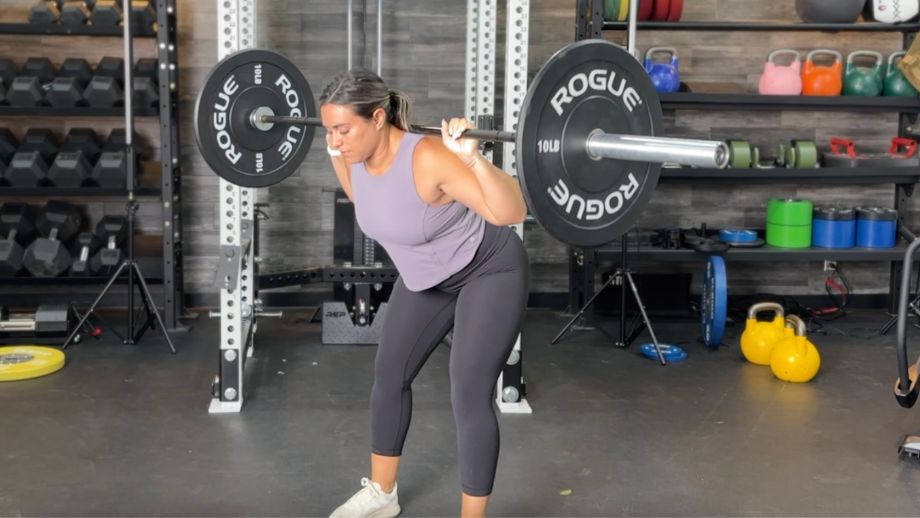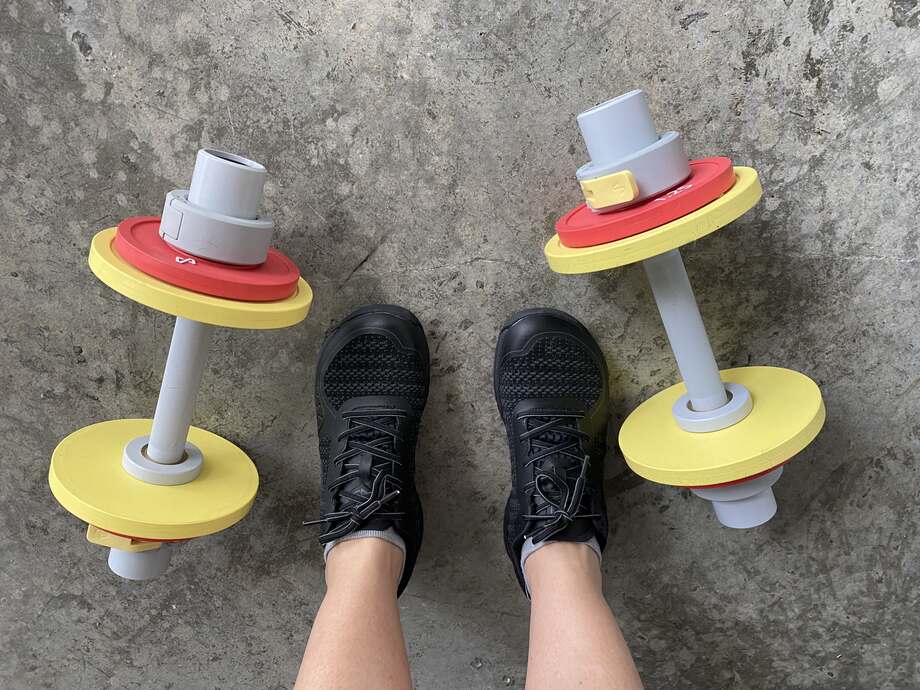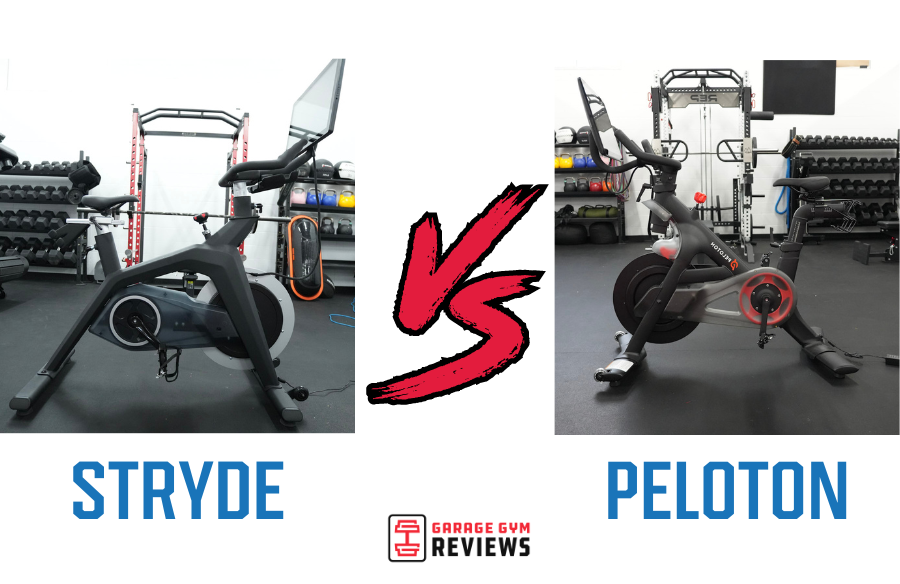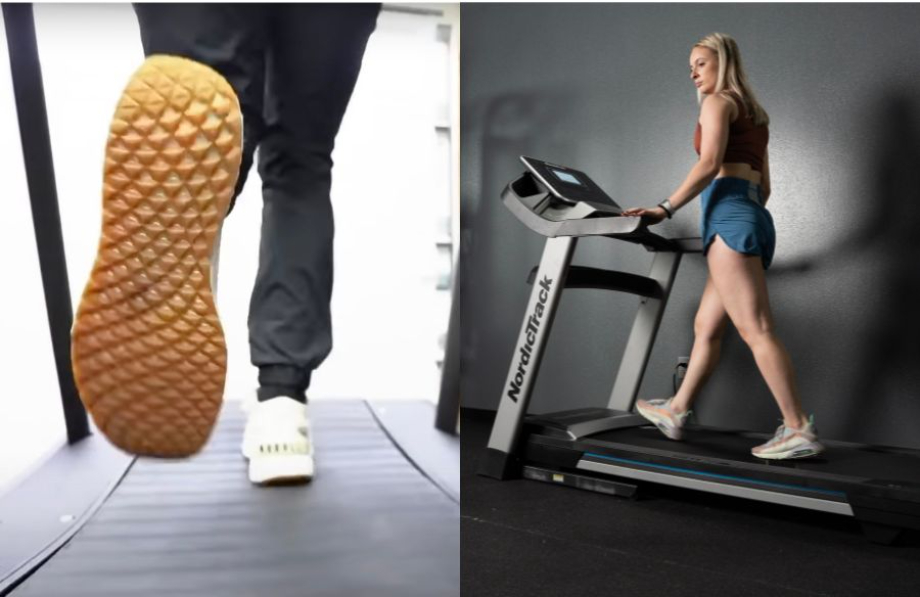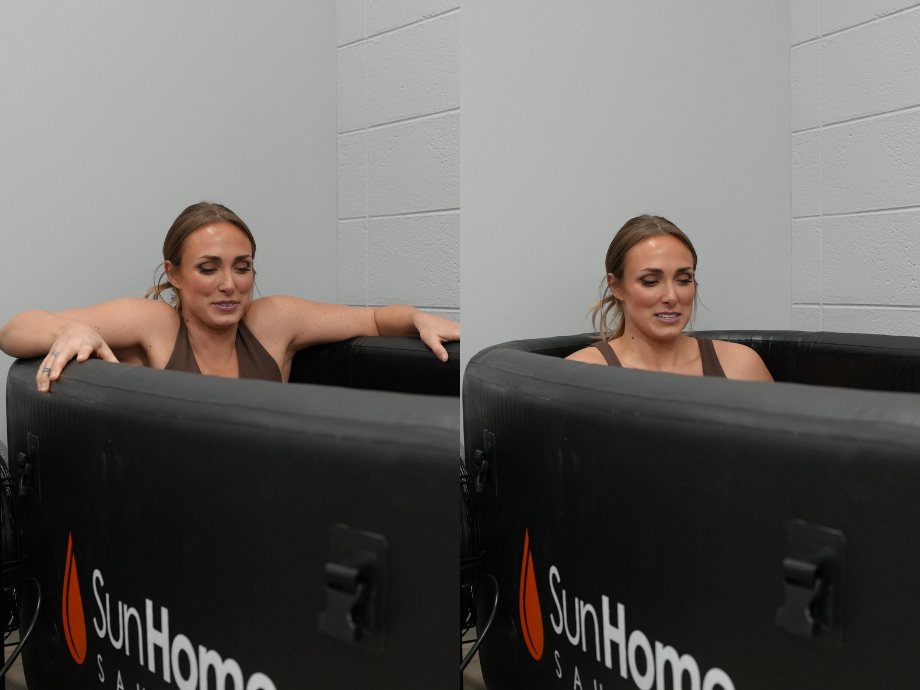A piping hot cup of coffee, a wholesome breakfast, getting to sleep in for a change — these are the makings of a “good morning,” but that’s not the kind we’re talking about today.
We’re talking about the core-strengthening, back-building, hamstring-stretching functional exercise that involves hinging at the hips, either with or without a barbell on your shoulders, and bowing forward.
Though it’s a very slight, straightforward movement, this one really packs a punch, providing activation in your posterior chain, including the lower back, glutes, and hammies, while also being one of the best ab exercises in building abdominal strength, improving posture, and increasing mobility.
We’re covering how to do the good morning exercise, providing top tips from our GGR personal trainers to perform it with proper form, discussing common mistakes to avoid, and we’ll even throw in a variation or two to keep things fresh!
RELATED: 9 Strength-Building Hamstring Exercises
How To Do the Good Morning Exercise
- If using a barbell, load it and unrack it onto your shoulders, standing as though about to back squat. You want your feet shoulder-width apart and your knees with a slight bend.
- Push your hips back and lower your chest toward the floor, holding your core tight.
- Continue dropping your chest until it is almost parallel with the floor.
- Slowly return to the starting position, bringing your hips to full extension.
- Repeat as needed.
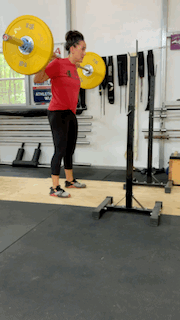
Trainer Tips for Form
So, how do we get the most impact from this great exercise? Amanda Capritto, GGR senior staff writer and certified personal trainer, provides the top trainer tips for form.
Head In Line With Spine
Keeping your head in line with your spine is important for the bodyweight exercise version of the good morning, but it’s absolutely critical to the barbell good morning.
That’s because it promotes proper alignment, which will protect your neck and spine from injuries like sprains, strains, and herniations.
“Maintaining proper alignment is important for reducing stress on the body,” says Amanda, “but it’s also important for efficient movement mechanics. You’ll get the most effect on the target muscles if you’re prioritizing proper form and neutral alignment.”
Press Heels Into the Ground
Speaking of good biomechanics, pressing your heels into the ground is another crucial cue to keep in mind when bowing forward during the good morning exercise.
“Pressing your heels into the floor helps you engage your posterior chain muscles,” says Amanda. “It also helps facilitate the hip hinge movement and assists with balance.”
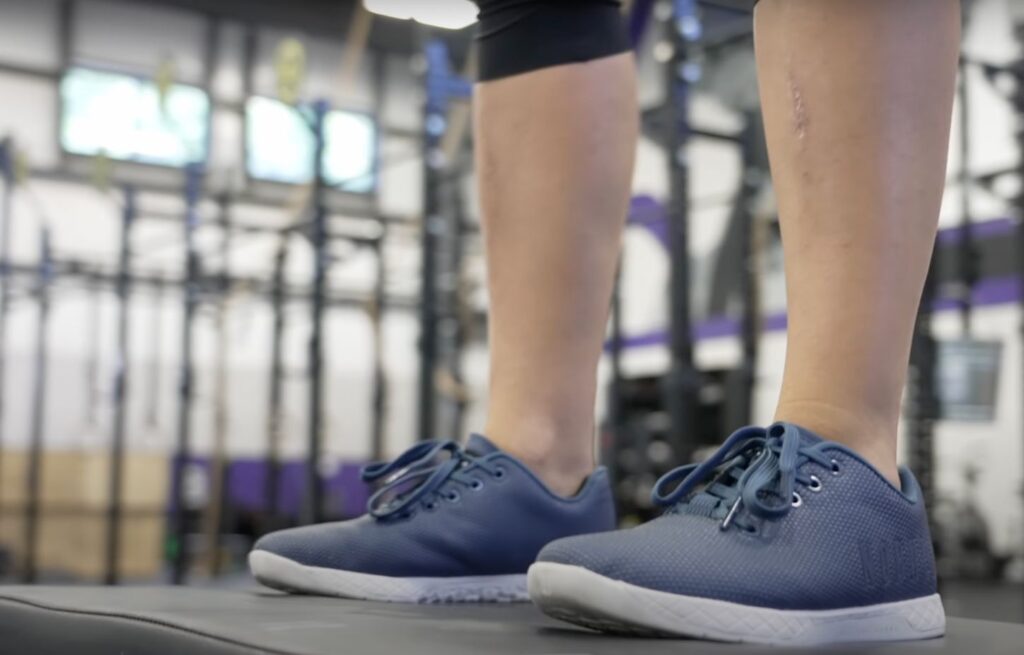
How do you know if you’re doing it right?
Get into your good morning stance and try lifting your toes off the floor. If your weight is on your heels, where it should be, you’ll be able to pick up your toes, wiggle them around, tap them rhythmically; and you’ll be able to do this at any point during the movement pattern.
Back Stays Flat
Keeping a flat back is a common cue for upper body exercises, and the good morning is no exception.
A flat back is an essential component of proper alignment, helping you keep a neutral spine and neck and ensure you reap all the benefits of the good morning exercise without injuring yourself.
RELATED: The Best Lower Back Exercises
Keep a Soft Bend in the Knees
We want mostly straight legs for our good morning, but completely straight is something most of us should avoid.
Straightening your legs completely could put the knee joint at risk for hyperextension, which could contribute to or cause injury. It’s also difficult to perform a good hip hinge with completely straight legs.
Protect your knee joint and enable a solid hip hinge movement by maintaining a soft bend in the knees. The key word here is “soft,” because too much bend and you’re turning your good morning into a back squat.
RELATED: What Muscles Do Squats Work?
Common Good Morning Exercise Mistakes
We know what to do to execute an excellent good morning, but what should we not do?
Here are the most common good morning mistakes, why you’re likely making them, and how to avoid making them, so you can get the most impact from this great exercise.
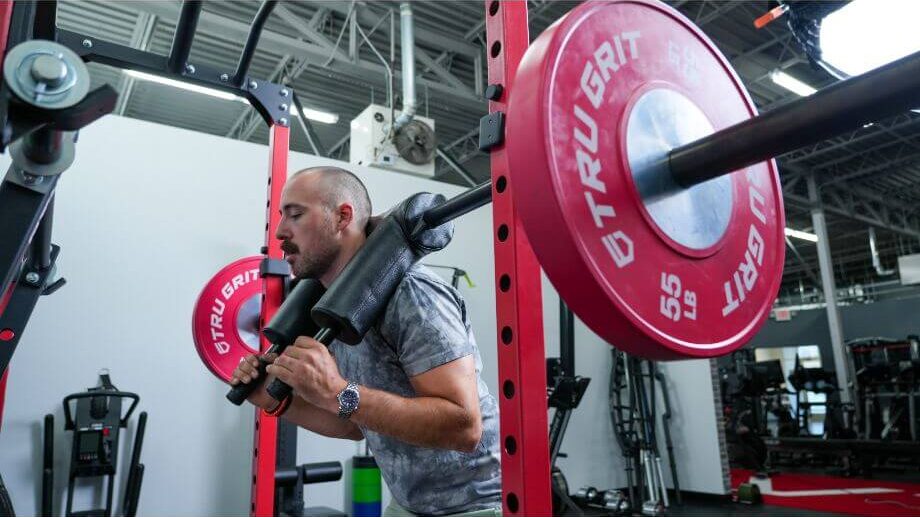
Craning or Jutting the Neck
Improper alignment during the good morning can be a literal pain in the neck! If you’re craning or jutting the neck forward during the exercise, it could indicate that you’re holding too much tension in the neck and shoulders, possibly from the heavy weight being too heavy to handle.
“Take a deep breath before initiating the movement,” says Amanda. “That will help ease the tension in your neck and shoulders, so you can get back into the right position before starting the exercise.”
If you find that, even after a little breath work, you’re still jutting the neck forward, consider using a lighter weight or performing a standard bodyweight good morning instead. It’s better to do a few perfect reps at a lighter weight than to do sloppy reps with poor form.
Relying on Lower Back Muscles
The good morning will provide some activation in the lower back muscles, like the erector spinae, but, just like in many deadlift variations, your glutes and hamstrings bear the brunt of the workload.
“They tell you not to lift with your back for a reason!” says Amanda. “Your back muscles are there to stabilize your trunk, not push the weight back up. You’ve got your leg muscles for that!”
Focus on driving through your heels and squeezing your glutes as you return to the standing position. This helps make sure you get the most impact in the true primary movers of the good morning exercise.
Moving Feet Around
Listen, we too love dancing through our morning workout routine, but you shouldn’t be showing off your fancy footwork during the good morning exercise.
You want your feet firmly planted, so your movements derive from your posterior chain muscles and the hip hinge movement.
If you find yourself sidestepping, stepping forward, redistributing your weight from toes to heels to the balls of your feet and so on, then you’re losing your form, most likely from selecting a weight that’s too heavy to handle or from exercise fatigue.
Listen to your body and take a rest, if you need, and consider moving to a lighter weight until your stance stays strong from start to finish.
Locking Out the Knees
We want to keep a soft bend in the knees throughout the full range of motion. That means you’re starting out with a slight bend, lowering your body without bending the knees further, and returning to full hip lockout without also locking out the knees.
“We’re doing this to protect the knee joint,” says Amanda, “because totally locking out the knees puts them at risk of hyperextension, which could lead to injury.”
A slight bend is all you need to protect the knee joint, as too much bend will shift the exercise’s impact from your glutes and hamstrings to your quads, turning into a weird pseudo-squat.
Good Morning Exercise Variations
Are you ready to turn your good morning into a great morning? Try out some of these good morning variations during your next workout!
Good Morning With Resistance Bands
Banded good mornings makes the most difficult portion of the exercise the part where you stand up. The bent-over, hinged-hip positioning leaves slack on the band, making it your new starting position, but the movement pattern is essentially unchanged.
Simply step on a resistance band, hinge forward and loop it around your shoulders and upper back, and stand up just as you would during the eccentric phase of the regular good morning.
RELATED: The Best Resistance Bands
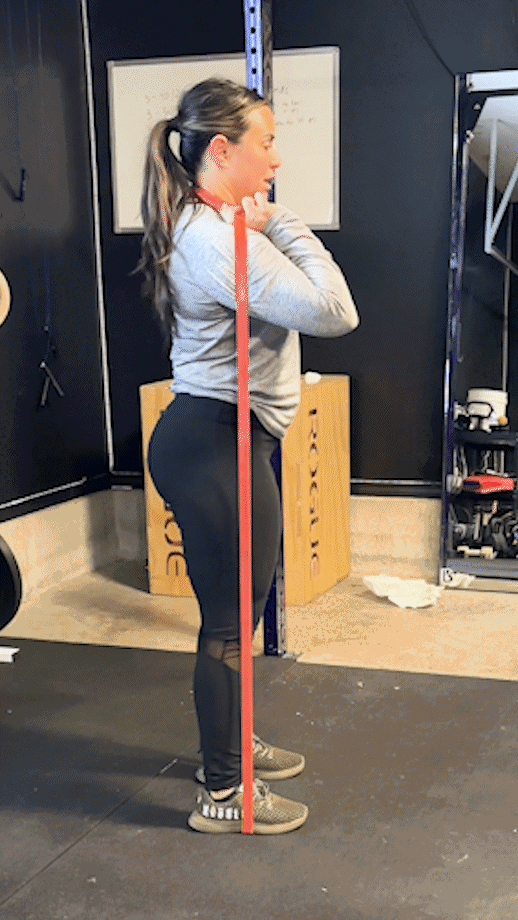
Goblet Good Mornings
No barbell or resistance band? No problem!
You can substitute a dumbbell, kettlebell, or any old household object to incorporate some resistance into your good morning exercise simply by holding it to your chest. Just select the object, clutch it to your chest, and do your good morning exercise as normal.
What we don’t recommend is using an actual goblet filled with your morning coffee, as the angle of your end position will have you spill that cup of joe all over the gym floor, and that’s not a good morning at all! Spilling your coffee is the opposite of a good morning!
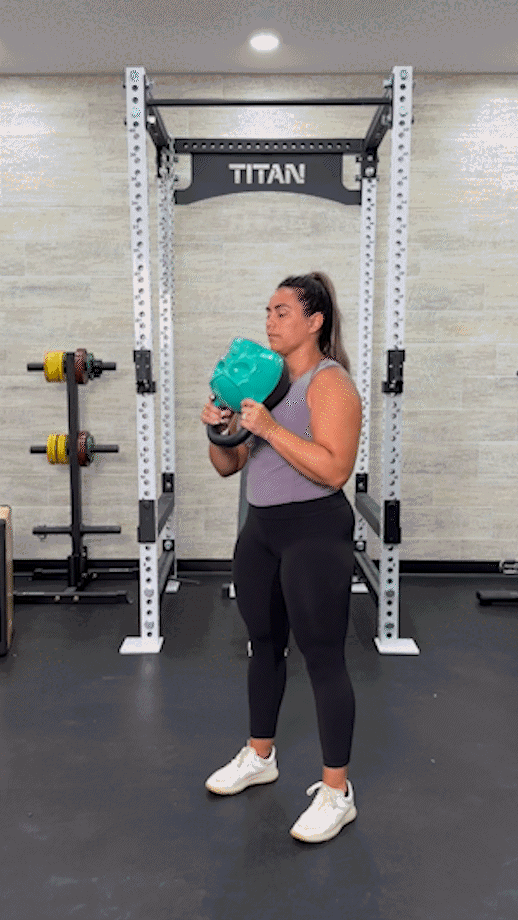
Good Morning Exercise: FAQs
Are good mornings safe?
Yes, they are. But, that doesn’t mean you should dive right in, load up maximal weight, and start doing the movement. Here’s why:
Bruce Lee was on the cusp of breaking out as the world’s biggest martial arts star, when his career came to a screeching halt in 1970. Lee felt something snap while he was exercising. Doctors would later determine he had done permanent damage to the fourth sacral nerve in his lower back.
He recovered, to some degree, but was allegedly plagued with chronic low back pain up until his untimely demise three years later; and what exercise was Bruce Lee doing when he got hurt?
That’s right. The barbell good morning.
Martial arts movie aficionados often cite this as evidence that the good morning exercise is dangerous, but we disagree. Despite this alarming anomaly, good mornings are generally very safe, especially if you’re solely using your own bodyweight.
Performing the movement without added resistance minimizes the amount of shear forces acting on your spine, reducing your overall risk of injury. Adding a barbell will add a little more oomph to the movement, but you’ll need to make sure your form is picture perfect and that you’re not racking more weight than you can handle.
RELATED: The Complete Guide To Barbell Safety
What does the good morning exercise work?
You’ll get a lot of activation in the posterior chain muscles, including the lower back, spinal erectors, glutes, and hamstrings.
It’s also a great exercise for beginners who need to practice the hip hinge movement. This movement will translate directly to other exercises, like the deadlift and back squat, that involve alternating between hip flexion and hip extension.
Are good mornings the same as RDLs?
The good morning exercise is similar to the Romanian deadlift, or RDL workout, but they are not the same. They are similar in that:
Both exercises require a hip hinge to perform
Both exercises improve hip mobility
Both exercises primarily target the posterior chain muscles
Both exercises build core strength and stability
However, there are some key differences:
The good morning uses a barbell racked across the shoulders and upper back, similar to the back squat, while the RDL demands a mixed or overhand grip and the barbell held in front of the body
Good mornings feature a greater range of motion
Good mornings place more emphasis on the lower back and glutes, while RDLs are heavier on the hamstrings
They’re both excellent exercises, each deserving a place in your lower body workout routine. For tips on when and how to use each, consider working with a certified personal trainer or other qualified fitness professional.
Why is it called the good morning exercise?
It’s common to greet people with a spirited “good morning” when you see them during your travels, but why in the heck did they name an exercise that? Now, friendly fitness-focused people never know if someone’s wishing them well or talking about exercise!
The good morning exercise gets its name from the movement’s resemblance to a bow.
A bow is a common greeting in Eastern culture, and many Asian countries are known to begin their school day with a bow to wish the teacher “good morning” before the lesson may begin.
In Western cultures, men would typically greet ladies with a courteous bow and a tip of the hat as well, so the motion was universally recognized as a way to wish someone “good morning.”
No one is sure exactly when the gesture was converted into an exercise, but one of the earliest known implementations of the good morning exercise was in the training regimen of early twentieth century strongman Hermann Görner.
Görner’s strongman career flourished between 1910 and 1930. He was a weightlifting champion, bodybuilding pioneer, and an all-around impressive specimen, known to routinely wrestle a 1,500-lb elephant as part of a circus sideshow act.
Of course, they wouldn’t let Görner antagonize an elephant today, but you get the point regarding his incredible strength! And he owed that, in part, to the good morning exercise!


